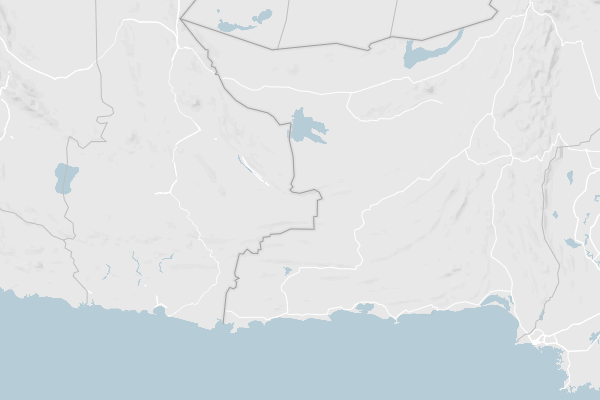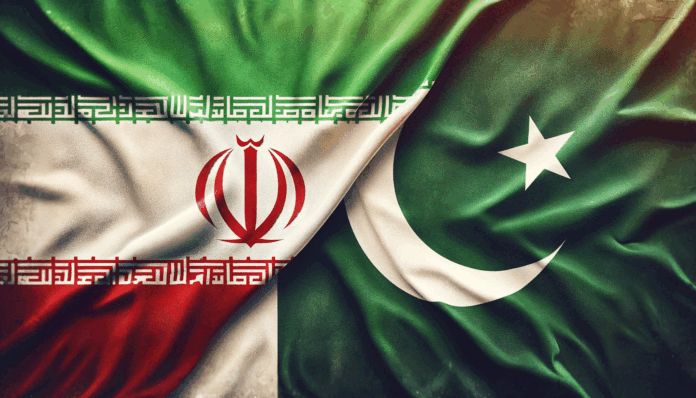The roots of the conflict lie in sectarian and geopolitical differences
By P.K.Balachandran
Colombo, January 19
Even as the world’s attention was on the unending war in Gaza and the Houthis’ attacks on shipping in the Red Sea, there was an unexpected flare up on the Iran-Pakistan border, with Iran conducting a bombing raid in Pakistan and Pakistan replying in kind.
Both said that they were targeting terrorists cum separatists. Each accused the other of giving sanctuary to its enemies only to get strong denials.
Iran said that it had targeted the Sunni militant group Jaish al-Adl based across the border in Pakistan’s Baluchistan province, and Pakistan said that it had targeted the Baluchistan Liberation Army a secessionist group based in the Sistan province of Iran.
However, the attack by Iran on Tuesday and the Pakistani retaliatory strike on Wednesday, were but an outcome of decades of fraught bilateral ties. Though both countries are Muslim, they had had a variety of differences, both sectarian and geopolitical.
Till 1979, Iran-Pakistan relations were “brotherly”. Iran gave Pakistan full political and diplomatic support during the Indo-Pakistan wars of 1965 and 1971. Differences arose after the 1979 Islamic Revolution in Iran which highlighted the Shiite character of Iran setting it in contrast to Sunni Pakistan. Later, in the growing competition to lead the Islamic world, in which Shiite Iran was competing with Sunni Saudi Arabia, Sunni Pakistan sided with Saudi Arabia.
While both Iran and Pakistan were against the Soviet invasion of Afghanistan and both supported the resistance movements, Iran supported the non-Pashtun groups called the Northern Alliance, while Pakistan supported the rival Mujahideen, a Pashtun group.
The Soviets withdrew in 1989, but the gap between Iran and Pakistan remained. Their alliances with the Afghan factions followed the old pattern, with Iran supporting the non-Pashtun Northern Alliance and Pakistan throwing its weight behind the Mujahideen/Taliban.
Adding to the friction, the Taliban killed several Iranian diplomats and Shia Hazaras in norther Afghanistan. This caused a rift between Pakistan and Iran also, as Pakistan was identified with the Taliban.
However, the fall of the Taliban in the wake of the September 9, 2001 attacks in New York by the Al-Qaida, brought Pakistan and Iran together because they shared the view that it was time Afghanistan got a multi-ethnic, broad-based and non-terrorist regime under the auspices of the United Nations.
Iran’s engagement with the US after 9/11 was close to begin. Iran helped the US military campaign against the Taliban who were accused of sheltering the Al Qaida. But the bonhomie was short-lived.
In 2002, in his State of the Union address, President George W.Bush declared Iran as being part of the “Axis of Evil” along with North Korea and Iraq. The US also accused Iran of developing nuclear weapons.
Looking at the developing situation from Iran’s angle, the US military presence in Afghanistan post-9/11 increased Tehran’s sense of insecurity. The US military presence at the Shindand airbase, close to Iran, was irksome. Iran also felt that the US was trying to stop it from becoming a world leader, and as an inheritor of the dazzling Persian Empire of yore.
In contrast to Iran, Pakistan remained a tool of the US in the latter’s War on Terror. And given the deterioration of US-Iran relations, Pakistan’s relations with Iran came under strain. Islamabad was also getting concerned about Tehran’s moving closer to India. Iran also claimed that the US was using Pakistani soil to destabilize Iran.
Another area of disagreement between Pakistan and Iran was the question of giving access to the mineral-rich Central Asian Republics that had emerged from the debris of the collapsed Soviet Union. Pakistan wanted Gwadar and Karachi’s Port Qasim to be the corridor to the Central Asian Republics, while Iran wanted Chabahar and Bander Abbas to be the gateways.
India had also developed an interest in using the Chabahar port for access to Central Asia, an area it was assiduously cultivating for its mineral wealth.
However, despite differences, Pakistan and Iran finalized a US$ 7.5 billion gas pipeline in June 2009. India was also included in it at Iran’s insistence to make it an Iran-Pakistan-India (IPI) pipeline. But India is said to have quit it due to US pressure.
In March 2013, Pakistan’s President Asif Ali Zardari and Iranian President Mehmud Ahmedi Nejad inaugurated the pipeline despite US opposition.
But again the bonhomie was short-lived. Sunni insurgents, chiefly the Jundullah (Soldiers of God), who operate from Iran’s Sistan- Balochistan province, have been of great concern for Iran. The objective of the Jundullah is to protect the “human rights, culture, and faith of ethnic Baluchis in Iran.”

Iran blames Pakistan for supporting them or at least giving them safe havens in its Balochistan province. Pakistani and Iranian border forces clashed in October 2014, when Iranian guards entered Pakistani territory looking for Iranian militants who had fled to Pakistan.
Jundullah is a violent movement against Iran, and many people blame it for terrorist attacks that happened in Iran. In these attacks, Iranian citizens, government personnel, and security forces, mainly the Iranian Revolutionary Guards, were killed. Pakistan was also blamed.
Gen. Mohammad Ali Jafari, the head of the Revolutionary Guards Corps, said that Jundullah has a direct contact with the American and British intelligence services “and, unfortunately, the Pakistani intelligence service.”
Iran summoned Pakistan’s envoy in Tehran to strongly protest Pakistan’s failure to dismantle Jundullah’s network on its territory. But the fact as that there was little that Pakistan could do to help as its writ did not, and still does not, run in large parts of Balochistan.
Another critical factor in Pakistan-Iran relations is Tehran’s growing ties with New Delhi, Pakistan’s arch enemy. India’s interaction with Iran was cold in the first decade of the Islamic Revolution in Iran. . Tehran’s support of the Kashmir cause and that of the Muslims in India irked India.
However, despite these irritants, cooperation between the two states in the economic, energy, and, to some extent, industrial sectors were initiated and these kept increasing. India is a big market for Iranian oil and gas, making them natural partners to cooperate in the energy sector.
The US had been trying to isolate Iran in the comity of nations and has imposed stringent economic sanctions. To neutralize the effects of these measures, Iran adopted various strategies. One of them was to get closer to those countries that could afford to defy the US sanction regime. India was one of these.
Both Iran and India have cultivated good relations with the Taliban after they came to power in Afghanistan after the US withdrawal. In contrast, Pakistan’s relationship with the Taliban soured. Pakistan is worried about a Tehran-Kabul-New Delhi axis emerging to threaten Pakistan’s interests in the region and its own security as well.
Separated by sectarian (Shia-Sunni) differences and clashing geopolitical differences, Iran and Pakistan were poised for a confrontation at any time. The attack and the counter attack earlier this week were symptomatic of the long-standing rift between the two neighbours.






this is a timely topic